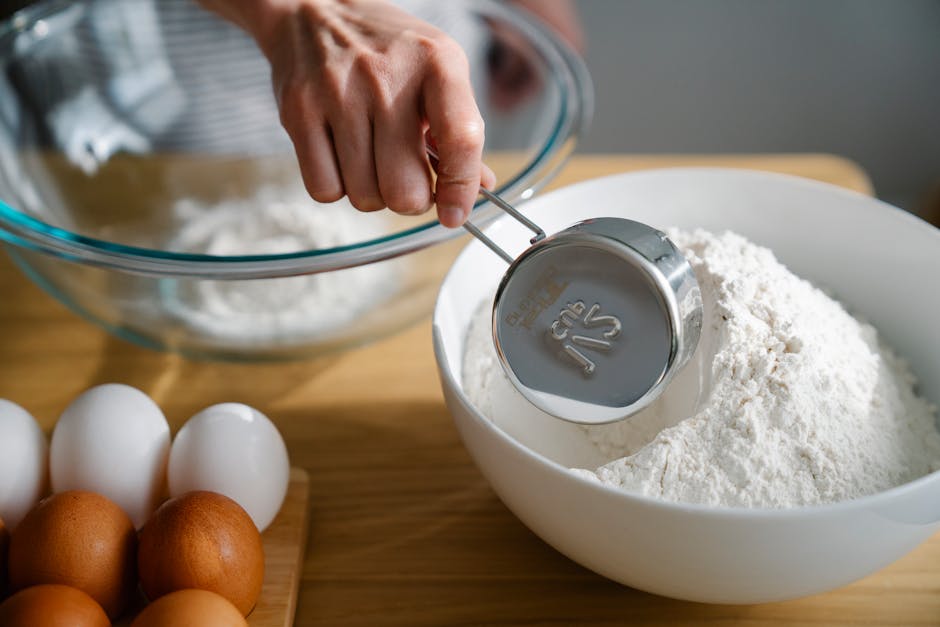Culinary success hinges on a delicate balance of flavors, textures, and aromas. While creativity and culinary intuition play vital roles, a foundational element often overlooked is the precision of ingredient measurement. Accurate measurement is not merely a detail; it’s the cornerstone of consistent, repeatable results and a pathway to mastering culinary techniques. This article delves into the multifaceted reasons why proper ingredient measurement is crucial in achieving desired outcomes in cooking and recipe replication.
Firstly, accurate measurement directly impacts the chemical reactions occurring within a dish. Baking, in particular, is a precise science heavily reliant on the ratios of ingredients. For instance, in baking a cake, the ratio of flour to leavening agent directly dictates the cake’s rise. Too much flour, and the cake will be dense and heavy; too little, and it might collapse. Similarly, the proportion of sugar to liquid impacts the cake’s moisture and sweetness. These relationships are not arbitrary; they stem from the chemical interactions between ingredientsgluten development, starch gelatinization, and sugar crystallization, to name a few. A deviation, even minor, from the specified measurements can trigger unintended chemical pathways, leading to a completely different end product. The resulting texture, structure, and even flavor profile will be significantly altered.
Beyond baking, even seemingly straightforward recipes benefit immensely from precise measurement. Consider a simple vinaigrette. The ratio of oil to vinegar profoundly influences its emulsification and its final taste. An excessive amount of oil renders the vinaigrette heavy and greasy, while too much vinegar makes it harshly acidic. Achieving the perfect balance requires careful attention to measurement, ensuring a harmonious blend of flavors that complements the intended dish. Similarly, in savory dishes, proper seasoning hinges on careful measurement. An overabundance of salt can ruin a dish, while too little leaves it bland and uninspired. This highlights the importance of precise measurement in controlling salinity, a critical element influencing the overall taste experience.
Secondly, consistency is paramount in culinary practice, whether you are a home cook preparing a family meal or a professional chef executing complex dishes for a restaurant. Accurate measurement allows for the replication of recipes with reliable results. This is especially crucial when following recipes from cookbooks, online platforms, or when scaling recipes up or down. If measurements are haphazard or inconsistent, the resulting dish may vary significantly from one preparation to another, even when using the same recipe. This unpredictability undermines the reproducibility of culinary creations and makes it challenging to refine techniques or develop personal variations consistently. Precise measurement ensures that the desired results are achieved each time, fostering confidence and control in the cooking process.
Furthermore, proper measurement directly impacts the safety and quality of the final product. In some instances, inaccurate measurement can lead to food safety concerns. For example, in preserving or canning, the precise ratio of sugar or salt is vital to inhibit microbial growth and prevent spoilage. Deviation from these ratios can increase the risk of foodborne illnesses. Similarly, in recipes requiring specific quantities of baking soda or baking powder, inaccurate measurements could affect the final product’s texture and even its safety. For instance, under-leavened baked goods might have a gummy texture. Over-leavening could result in a flat or unevenly risen product. Such instances underscore the importance of precise measurement not only for palatable results but also for consumer safety.
Moreover, the aspect of ingredient cost-effectiveness cannot be ignored. Accurate measurement helps avoid unnecessary waste. Whether it is expensive ingredients like saffron or everyday staples like flour or sugar, careful measuring prevents over-use and maximizes the utilization of resources. This is especially significant when working on a large scale, such as catering or commercial cooking. Furthermore, by accurately measuring ingredients, cooks can better understand the precise amount of each element required, making it easier to estimate quantities for future preparations and plan purchases efficiently. This leads to savings in both time and resources.
Finally, mastering precise measurement fosters a deeper understanding of culinary principles. As one gains experience in accurately measuring ingredients, they develop a heightened awareness of the relationship between different components in a recipe. This develops a more intuitive understanding of flavor profiles, texture interactions, and the overall balance of a dish. This enhanced comprehension enhances culinary creativity, empowering cooks to experiment and adapt recipes confidently, while maintaining control over the final outcome. It transforms the cook from a mere recipe follower into a knowledgeable artisan capable of making informed adjustments and developing their unique culinary style.
In conclusion, precise ingredient measurement is not a trivial step in the cooking process; it is a cornerstone upon which consistent, safe, and delicious culinary creations are built. It fosters reliability, optimizes resource usage, and ultimately empowers the cook with a deeper understanding of culinary principles and techniques. While culinary artistry encompasses creativity and intuition, accuracy in measurement provides the essential foundation for achieving culinary excellence and consistently producing desirable results. Embracing precise measurement transforms cooking from a mere activity into a precise and rewarding art.
